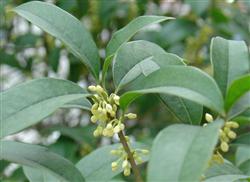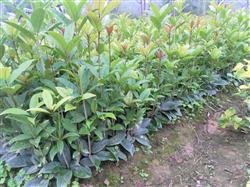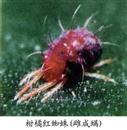How to control common pests

How to control common diseases and insect pests of sweet-scented osmanthus? There are several kinds of sweet-scented osmanthus tree diseases and insect pests as follows: 1. Leaf spot disease: the main harm leaf is brown spot, the disease spot is round or irregular, the center is gray to grayish white in the later stage, the edge is reddish brown, and black-gray mildew occurs on the disease spot. High temperature and humidity is often the inducement of the disease, spread by wind and rain, infection, and the disease decreased after October. Prevention and treatment: ① winter pruning to remove diseased leaves and remove diseased leaves, centralized burning; at the beginning of May, ② sprayed 1RV 2RV 100-200 Bordeaux solution, and then sprayed 50% benzoate 1000 to 1500 times or azinamide 1000 times or 70% methyl topiramate 1000 times. 2. Leaf blight: the damage of the leaf starts from the leaf tip and leaf edge, the small spot is light brown, and then expands into a round or irregular shape. The disease spot can be connected with each other up to 1 hand 3 to 1 inch 2 of the leaf, grayish brown, the edge is green, and small black spots are produced on the disease spot in the later stage. When high temperature and humidity, poor ventilation and weak plant growth, the disease is more serious, usually from July to November, spread by wind and rain. Prevention and treatment: at the initial stage of the onset of ①, 65% Dysen zinc 500x solution or 1 2Rd 200 Bordeaux solution can be sprayed; after ②, 50% carbendazim wettable powder can be sprayed 800 to 1000 times or 50% benzoate wettable powder 1000 to 1500 times. 3. Diamondback moth: green or yellowish green, white topline, most likely to occur on the back of leaves, feeding on mesophyll, leaving cortex. The soil around the tree trunk can be loosened before the larvae fall into the cocoon, so as to induce the larvae to concentrate on cocooning, and then collect and destroy it. Or spray with a spore content of more than 10 billion / ml Bt emulsion, or spray with 2.5% deltamethrin EC or 20% fenvalerate EC 3000 times. 4. Scale insects: 2 to 3 generations can occur in the Yangtze River basin, and the most harmful ones are from May to June and from August to September. They are concentrated on the shady side of the main shoot and branches, or on the leaves of branches, and both adults and nymphs secrete honeydew, which leads to the occurrence of coal fouling disease of flowers and trees. High temperature and humidity is conducive to the occurrence, when a small amount of it occurs, it can be brushed off gently with a soft brush with good results. It is most advantageous to spray with 0.3 to 0.5 Baomedo stone sulfur mixture in summer, or 1500 times of monocrotophos EC, used alone or mixed, once every 7 to 10 days, 2 to 3 times in a row. 5. Red spider: high temperature and drought conditions often occur. Control methods: in dry weather, attention should be paid to irrigation and combined with fertilization to promote plant health and enhance insect resistance. In the use of chemical pesticides, we should pay attention to frequent rotation, because it will produce resistance after the application of certain highly toxic pesticides. It can be sprayed with 2000 to 3000 times of 40% chrysanthemum EC or 1500 times of 40% dimethoate EC with good control effect. Click to get more sweet-scented osmanthus planting techniques
- Prev

How do sweet-scented osmanthus reproduce asexually?
How to cut and raise seedlings of sweet-scented osmanthus trees? The method is how to raise seedlings by cutting of sweet-scented osmanthus trees: one. Bed insertion is prepared to select light loam farmland for deep ploughing to make a bed. Guishu requires a bed width of 120 cm, a bed height of 25 cm and a channel width of 40 cm. The soil is fine, the bed surface is flat and the channel is smooth. Cover the top of the slotting bed.
- Next

How to control sweet-scented osmanthus citrus red spider
How to control sweet-scented osmanthus citrus red spider? The flower citrus red spider is a kind of mites. Adults, larvae, nymphs and mites can harm leaves and branches. The injured leaves had small yellow and white spots, which gradually turned gray and white, red spots, brown and burning in severe cases, withered and fell off. Prevention and treatment: remove the diseased leaves and burn them centrally. ...
Related
- Fuxing push coffee new agricultural production and marketing class: lack of small-scale processing plants
- Jujube rice field leisure farm deep ploughing Yilan for five years to create a space for organic food and play
- Nongyu Farm-A trial of organic papaya for brave women with advanced technology
- Four points for attention in the prevention and control of diseases and insect pests of edible fungi
- How to add nutrient solution to Edible Fungi
- Is there any good way to control edible fungus mites?
- Open Inoculation Technology of Edible Fungi
- Is there any clever way to use fertilizer for edible fungus in winter?
- What agents are used to kill the pathogens of edible fungi in the mushroom shed?
- Rapid drying of Edible Fungi

